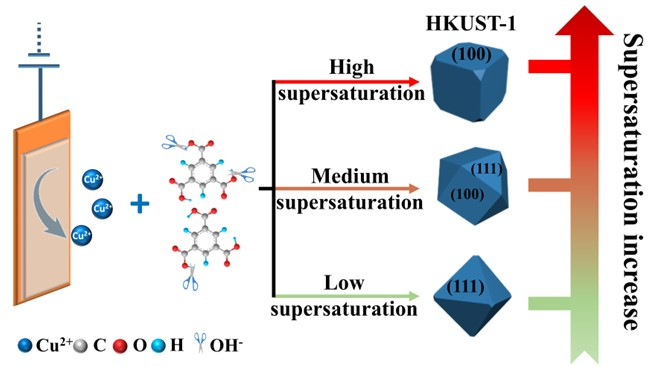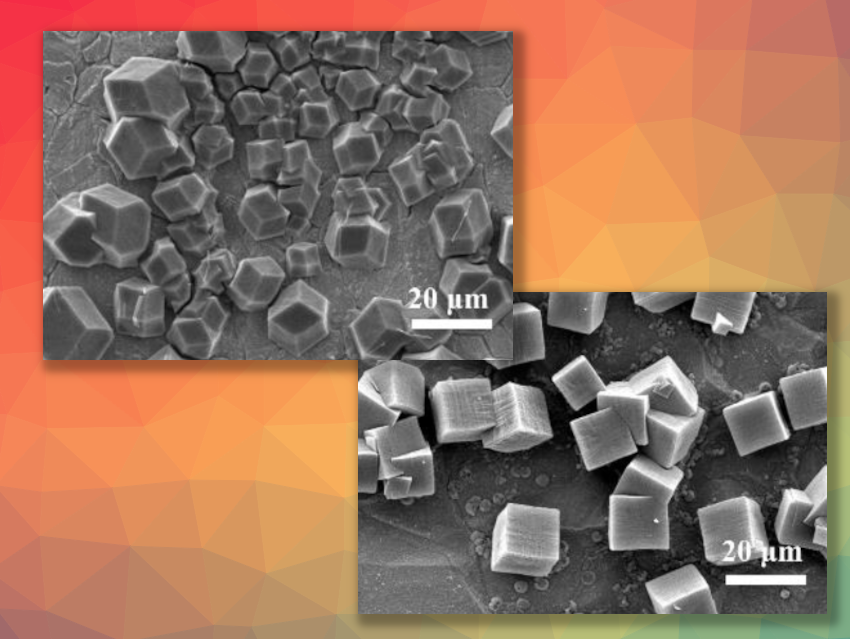Metal–organic framework (MOF) films can be useful, e.g., in separation, sensors, batteries, and (electro)catalysis. Controlling which crystal facet of a MOF is exposed is a useful strategy to enhance its performance without changing the chemical structure. However, MOF films prepared in situ often lack precise facet control.
Jan Fransaer, KU Leuven, Belgium, Xuan Zhang, KU Leuven and Zhejiang University, Hangzhou, China, and colleagues have developed a simple electrochemical method for the in-situ synthesis of MOF films (HKUST-1 and MOF-14) with well-defined exposed facets. The team investigated the influence of deposition parameters—including the pH of the solution, the current density, and the concentration of linker and solvent—on the exposed facets of the deposited MOFs.
The researchers found that the exposed facet can be precisely regulated by controlling the supersaturation of the reaction components via tuning these parameters. Increasing the supersaturation leads to exposed facets with higher surface energy. For example, in the case of HKUST-1, simply increasing the pH of the electrolyte changes the preferred exposed crystal facets of the deposited MOF from (111) with a lower surface energy to (100) with a higher surface energy.

MOF films with specific exposed facets were electrodeposited on various substrates (e.g. copper meshes, copper foams, and polypropylene membranes). This allowed the team to prepare MOF films that are tailored to different applications. While they focused on the regulation of the crystal morphology of HKUST-1 and MOF-14 films, the researchers propose that this strategy could also be feasible for the preparation of other MOF films with well-defined exposed facets.
- Electrosynthesis of metal‐organic framework films with well‐defined facets,
Wei Guo, Wei Zhang, Ning Han, Sijie Xie, Zhenyu Zhou, Wouter Monnens, Omar Martinez Mora, Zhenhong Xue, Xueliang Zhang, Xuan Zhang, Jan Fransaer,
Chem. Eur. J. 2023.
https://doi.org/10.1002/chem.202302338




